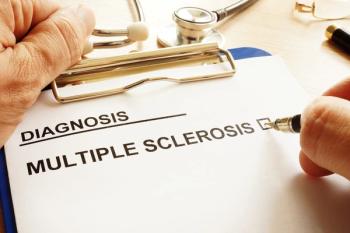
Levels of MS Biomarker Rise When DMTs Stop in Pregnancy, Study Notes
A recent study explored whether interrupting disease-modifying therapies (DMTs) because of pregnancy leads to increased levels of a specific biomarker of neuroaxonal injury seen in MS.
Pregnant women with
A recent study explored whether interrupting disease-modifying therapies (DMTs) because of pregnancy leads to increased levels of a specific biomarker of neuroaxonal injury seen in MS. Levels of the blood biomarker, called neurofilament light chain (NfL), is linked with relapses and MRI activity. Response to DMTs is typically seen by a decrease of NfL.
Using the Swiss MS Cohort Study, researchers investigated prospectively documented pregnancies by collecting serum samples at 6 or 12 months and analyzing them with the Simoa NF-light assay. Uni- and multivariable mixed effect models were used to investigate associations between clinical characteristics and longitudinal NfL levels.
There were 72 pregnancies in 63 relapsing MS patients (median age 31.4; disease duration 7.1 years; Expanded Disability Status Score was 1.5 at last visit before birth).
In total, 433 samples were included: 92 during pregnancy or up to initiation of DMT and up to 9 months postpartum; 167 prior to the postpartum period; and 174 after the postpartum period.
Four patients had no DMT before, during, and after pregnancy.
DMT was continued in 13/72 pregnancies (>6 months during pregnancy: 6 rituximab/ocrelizumab, 4 natalizumab, 1 interferon-beta 1a, 1 fingolimod and 1 glatiramer acetate).
In univariable analysis, NfL levels were on average 22% higher during pregnancy compared with outside the pregnancy and postpartum period (β: 1.22; 95% CI, 1.10-1.35; P <.001).
There were 29 relapses during the postpartum period; in a multivariable analysis, relapses (within 120 days before serum sampling) were associated with 98% higher NfL (β, 1.98; 95% CI, 1.75-2.25; P <.001); NfL was 7% higher per EDSS step increase (β, 1.07; 95% CI, 1.01-1.12; P = .013) and on average 13% higher during vs. outside the postpartum period (β, 1.13, 95% CI, 1.03-1.24; P =.009).
The effect of the postpartum period on NfL disappeared after including DMT exposure (yes/no) at the sampling time in the model (β, 1.07; 95% CI, 0.97-1.18; P = .178).
Patients sampled while on DMT had on average 12% lower NfL levels compared with patients not on DMT (β, 0.88; 95% CI, 0.79-0.98; P = .019).
The increase of NfL levels discovered during the postpartum periods was independent of relapses, suggesting increased subclinical disease activity during this time, the researchers concluded.
After including DMT into the model, the effect of pregnancy on NfL disappeared. Allowing DMTs to continue during pregnancy may be warranted, the researchers said.
The study was presented at MSVirtual2020: 8th Joint ACTRIMS-ECTRIMS Meeting.
Newsletter
Stay ahead of policy, cost, and value—subscribe to AJMC for expert insights at the intersection of clinical care and health economics.







































